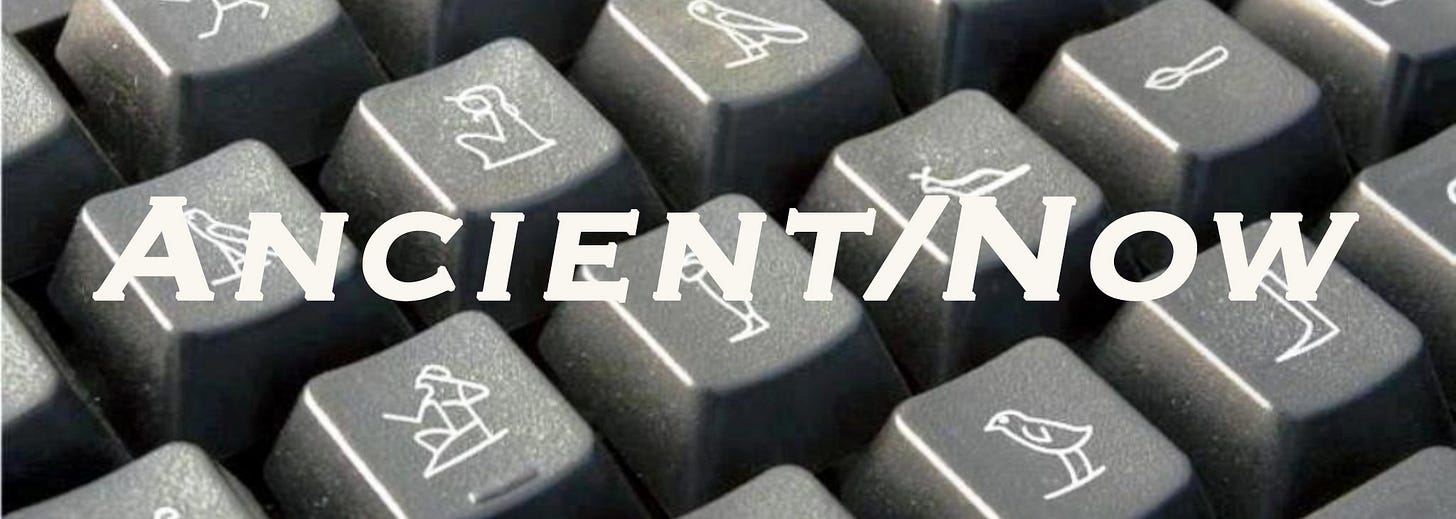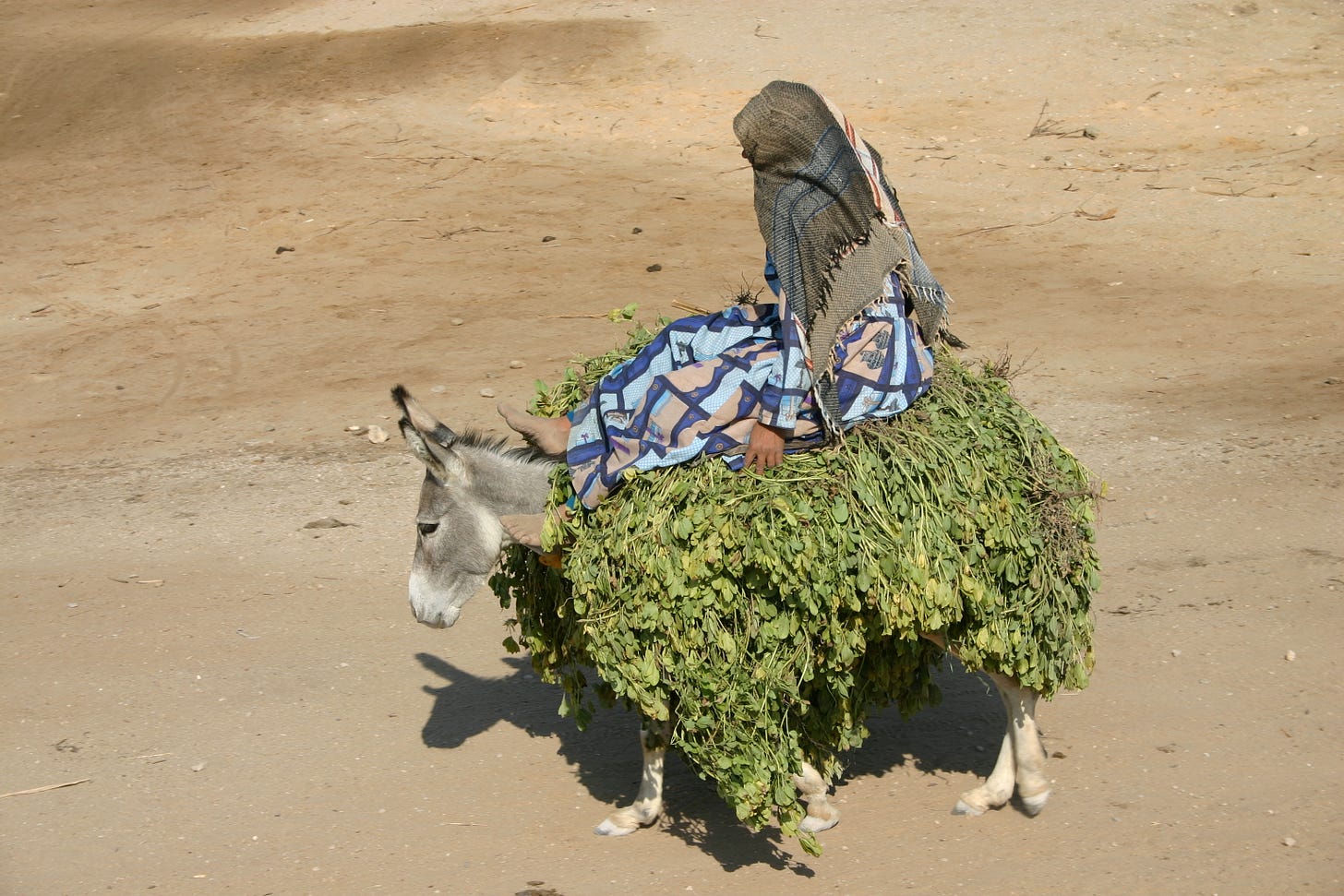Ancient/Now - January 27th
Ancient kings combating "fake news," how the donkey changed human history, what the Colosseum sewers reveal, and more
How did kings combat rumors and “fake news” in the ancient Near East?
“As for what you, my brother, wrote to me: ‘Thus my sister wrote to me: “When messengers travelled to visit the Babylonian princess who had been given (in marriage) to (the king of) Egypt, they were left standing outside!” It was Ellil-bel-nishe, the Babylonian king’s own messenger, who informed me of this.’ Because [I] heard the information, should I not have written to my brother about it?” (Catalogue of Hittite Texts 176)
This letter from Ramses II to the Hittite king refutes misinformation that the Babylonian envoy sent to call on the Babylonian princesses given in marriage to him were rudely left “standing outside” when they arrived. That kind of rumor could be damaging, causing not just ruffled feathers, but diplomatic friction in an era when international relations in the ancient Near East were taking on a greater significance than ever before. No doubt Rameses II was eager to correct the record in this case. But how did the kings of the Bronze Age ancient Near East facilitate rapid communication over great distances in an era when long-distance travel took days, weeks, or months? Letters—lots of letters. The kings of great powers like Egypt, Mitanni, Babylon, and Assyria communicated through letters written in cuneiform on clay tablets that flowed across long distances, carried by diplomatic envoys. Surviving diplomatic communications such as the so-called “Amarna letters” from Egypt also provide a window into Bronze Age international relations. Kings were not afraid to confront each other about rumors, real and perceived slights, and lay on the flattery with admiring and flowery compliments when it suited their purposes.
Well, someone has written an article about this! Mohy-Eldin E. Abo-Eleaz, Associate Professor History and Civilization of Egypt and the Ancient Near East at Minia University, recently published his article “Fake News and Rumors in the Diplomatic Correspondence between Egypt and the Other Great Powers during the XIVth and XIIIth Centuries BCE” in Revue d’Égyptologie. He examines examples in surviving diplomatic letters in which kings knowingly pass on rumors or “fake news” and how these power brokers dealt with such practices and attempted to resolve misunderstandings. The surviving evidence on ancient diplomacy seems to support the idea that misinformation and “fake news” complicated our communications long before Twitter and Facebook lit the world with their overloaded information dumpster fires.
How the humble donkey changed human history
A study sequencing the DNA from the skeletons of donkeys discovered in an ancient Roman villa east of Paris is leading to new insights on the donkey’s role in human history. Often seen as a humble beast of burden, the donkey is perhaps easy to overlook in favor of other animals like dogs or horses. But the domesticated donkey changed the world. This animal is able to bear extraordinary loads of cargo compared to its body weight, enabling the transport of goods over land that opened up new trade routes for river-based economies like Mesopotamia and ancient Egypt and made wide-scale trade possible throughout the varied geographies of the vast Roman empire. Not only that, the donkey lives much longer than the horse, as much as forty years. The study analyzed the genomes of both ancient and modern donkeys.
They found that donkeys were most likely first domesticated from wild asses – probably by pastoralists – around 7,000 years ago in Kenya and the Horn of Africa, East Africa. While this is slightly earlier than previously believed, perhaps more surprisingly, the researchers also concluded that all modern donkeys living today appear to be descended from this single domestication event.
In some modern societies the donkey continues to play a significant role in daily life, a reminder of the important role they still play in the lives of millions of people across the world. If you go to Egypt today donkeys are still very much of use. Jordan even got to ride one this past winter. :) Kara, for her part, avoids donkey travel because her feet would drag the ground haha… But individual donkey-riding predilections aside, no doubt further study of donkey genomes will yield more insights into the significance of their role in human history.
Colosseum sewers reveal ancient spectators’ snacking habits
With the Super Bowl and the end of the NFL football season upon us, we are pleased to greet a discovery that provides a glimpse into the snacks Colosseum spectators were munching on during the games and other performances taking place in the massive amphitheater. Sure, it’s a little gross that these insights come via the ancient sewers of the Colosseum, but any archaeologist will tell you the sewers and trash pits are where it’s at—they are treasure troves of information. In this case, they are revealing what kinds of things the 50,000+ people attending events at the Colosseum were eating.
The finding took place during a yearlong study in which archeologists excavated 1,900-year-old remnants of seeds and fruits such as nuts, olives, cherries, grapes, figs, blackberries, and peaches. On top of that, according to a statement from the Colosseum Archaeological Park, there were also traces of “meat cooked at the moment on improvised braziers, together with some pizza.”
Damn, but we wish we could get such healthy fare at our modern amphitheaters, but there we are… It’s tempting to imagine that archaeological discovery is all about exploring tombs and temples when we really need to be excavating more trash heaps. And so we ask you: What would a future archaeologist sifting through your trash bins learn about you?
New Aten Museum in Minya opening to the public after 20 year delay

Egypt’t Ministry of Tourism and Antiquities recently announced that the new Aten Museum in Minya will soon open to the public. The museum is located near the site of the 18th Dynasty king Akhenaten’s capital Akhetaten (known today as Amarna) and will be mostly dedicated to the reign of Akhenaten, although it will also feature exhibits of local artifacts from prehistory through the Greco-Roman period. The construction of the museum began in 2002, but progress was stalled due to political events in Egypt—namely the January 25th revolution—until work resumed in 2015. The Aten Museum won’t be just a museum, but a cultural complex with scenic walkways overlooking the Nile, a theatre, library, shops, restaurants, and a conference center, making it one of the largest museums in Egypt. We cannot wait to visit!
18th Dynasty tomb uncovered near the Valley of the Kings
An Egyptian-British team of excavators recently uncovered a tomb near the Valley of the Kings (in modern-day Luxor) which they think dates to the 18th Dynasty, a period often thought of as ancient Egypt’s golden age dominated by well-known rulers like Hatshepsut, Thutmose III, Akhenaten, and Tutankhamun. Unfortunately, the tomb appears to be in rough shape due to damage by centuries of flooding that carried debris into the tomb.
There are conflicting reports about when in the 18th dynasty the tomb dates, but we can say that it is located close to other earlier 18th dynasty tombs. Maybe there was some longer term use at play, because some reports say the pottery is from later in the dynasty. There is always the possibility for reuse making tomb dating more difficult. Let’s hope that further excavation reveals more information and that photogrammetry can make the damaged scenes decipherable.










